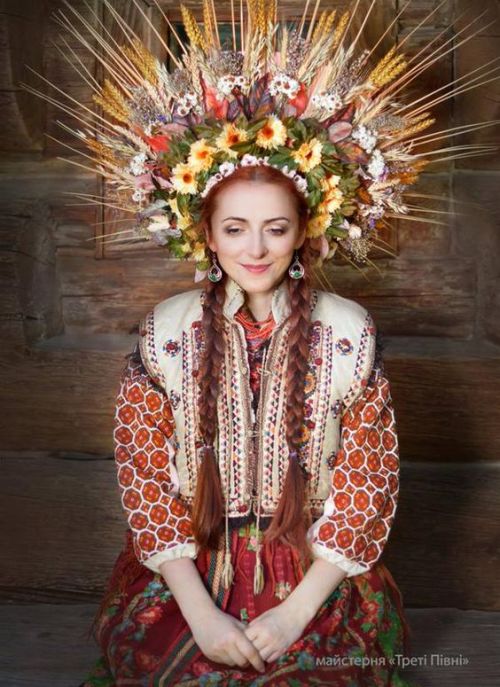#ukrainian culture
A Lesson in Culture
“In both Ukraine and Russia, both spouses-to-be would wear crowns during the wedding ceremony, apparently continuing an ancient tradition from Byzantium,” says professor Alexander Mihailovic, who teaches at Bennington College and specializes in Slavic Literature. “Ukraine has preserved the original Greek and Byzantine tradition of wedding head wreaths.”
Post link
Фенріс-бандурист. Підримую українську хвилю творчості. Освоюю потроху Procreate, скетчу і надіюся завершити цю роботу також в Procreate, шоб пощупати можливості програми, бо поки шо мені подобається)
Fenris playing Bandura, ukrainian traditional instrument. On a wave of the Ukrainian culture <3
Will finish this sketch soon, stand by
I’m now observing a very dangerous (Christian-like) trend, which Ukrainian officials (not necessarily the Zelensky government) can use for their own purposes in the future. This is the conviction that in order for Ukrainians to be appreciated and Ukrainian culture to be respected, it was necessary to have this right to “suffer” and “shed the blood.”
This is not true! It’s no secret that before the war, the average resident of Western Europe knew very little about Ukraine (except for Chernobyl, the war in 2014 and some Eurovision participants), Ukrainian artists were constantly ignored at Western biennials and other exhibitions, Ukrainian culture was frankly considered “provincial”. Now “Ukrainian Studies” will surely become the most advanced direction in the humanities. But our lives aren’t worth articles in fashion magazines, scholarships to study at Western universities, and lectures on Ukrainian cinema in Western NGOs. We should have the right to attention and respect for ourselves without war and suffering!
When it comes to gender ideology of the childbirth – the act in which a woman partakes on both the body level and the ritual level, this act is implicitly associated with death. The realms of birth and death are seen as equal and are perceived as transitional and liminal events that result in the balance shift in the universe. For the parturient woman it was forbidden to take part in the community by all kinds of prohibitions for two to six weeks. As the people say, during this time “her grave does not close”.
From “Midwife in the cultural and historical tradition of Ukrainians” by Olena Boriak
“At six weeks old, the child is similar to an angel: it knows neither good nor evil. Although it laughs in its sleep, it isn’t laughing on its own: a good spirit possesses it and shows it rainbows, and the angel entertains it and makes it rejoice at the thought that it doesn’t owe anything to anyone yet.
Angels love to play with children. Sometimes when the cradle sways by itself people say that it’s an angel swaying the cradle. Angels entertain and tease little children.
To make a child laugh, they say: ‘’we’ll take the father, take the father!’’ and the child laughs because it doesn’t know yet that it needs father. And as they say ‘’we’ll take the mother!’’ – now it starts to cry and whimper. It is all done in a dream.”
From “The child in the customs and beliefs of the Ukrainian people” by Marko Hrushevsky



